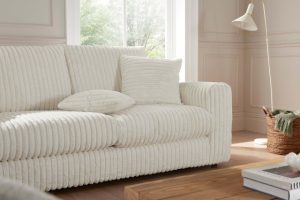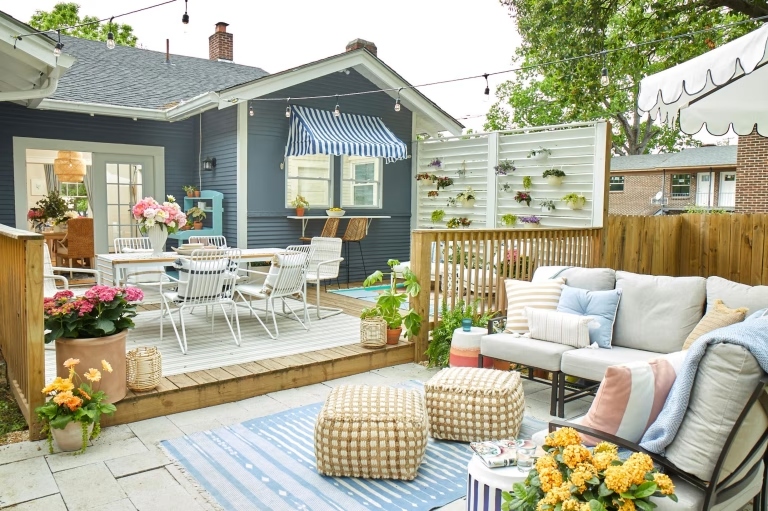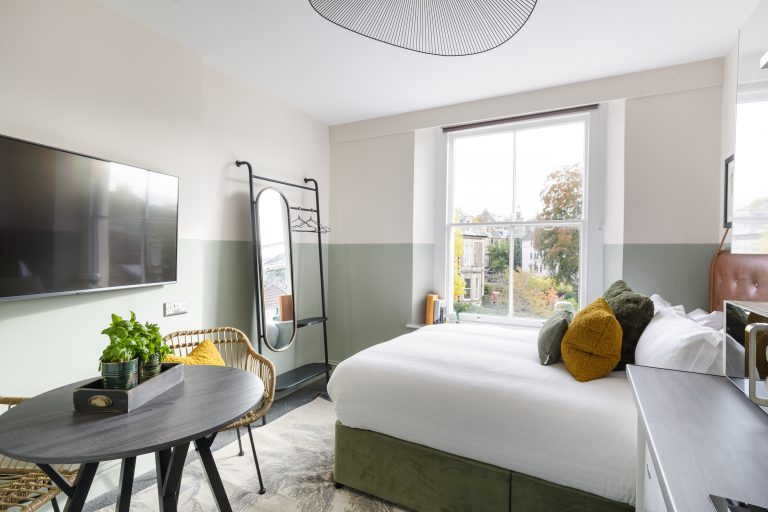Shopping for a sofa in a small apartment can feel like doing geometry in a stairwell. You want something you can stretch out on, but not a monolith that swallows the room (or jams on the third-floor landing). I’ve lived with—and moved—more compact couches than I care to admit, and our team spent months measuring frames, hauling boxes through narrow hallways, and long-term testing cushions to find the small-space sofas that actually deliver on comfort, proportion and durability.

Below you’ll find our top picks across categories—plus practical advice on how to measure correctly, which fabrics survive red wine and pet claws, and what construction details signal a sofa that won’t sag in a year. Where it matters, I’m citing independent, trusted sources (material performance, indoor air quality, fabric abrasion tests, delivery fit guides) so you can sanity-check the claims.
Methodology: How We Chose and Tested
We prioritized sofas that balanced seat comfort with space efficiency. Over several months, our team:
- Measured footprints, seat height and depth (for most adults, ~17 to 19 inches seat height and a seat depth between ~20 and 24 inches hit a comfort sweet spot).
- Assembled units solo and in tight corridors to assess move-in friendliness (modular or boxed components scored higher).
- Evaluated construction (kiln-dried hardwood or engineered hardwood frames, high-resiliency foam, quality webbing/coil support) and fabric performance (abrasion-rating standards, stain resistance).
- Logged real-world use: 30–90 days of lounging, guest sleeping, kids jumping, pets testing claws (inevitable).
Helpful resources we used along the way: fit/delivery guides from retailers, fabric performance standards, and indoor air quality guidance for VOCs and flame-retardant regulations. See: delivery fit guide, fabric abrasion (Wyzenbeek) standards, EPA on VOCs, and California TB117-2013 flammability.
The Best Sofas for Small Spaces:
Best Overall: Crate & Barrel Tidal Sofa (83″)

Why it wins: Proportions are spot on for apartments, with a generous feel that doesn’t overwhelm. The 83-inch width (there are larger widths too) and ~43.5-inch overall depth deliver stretch-out comfort while keeping traffic lanes open. Clean lines and a plinth base read modern and calm—good visual hygiene for small rooms.
Materials and comfort: The cushion blend (foam + polyester fiber with down-proof ticking) holds its shape better than many all-down options, which can require constant fluffing. The brand’s performance fabric options are extensive (200+ fabrics); the “performance” category is designed to resist stains and abrasion. For context on performance textiles and ratings, see the ACT Guidelines (Wyzenbeek). If you live with pets, prioritize tightly woven performance weaves over open-loop bouclé on this model.
Good to know: If you’re sensitive to off-gassing, look for GREENGUARD Gold or similar third-party certifications on fabrics/foams when available (UL GREENGUARD; EPA on VOCs).
Who it’s for: Renters who want “quiet luxury” lines, resilient cushions and a size that plays nicely with 10- to 12-foot-long walls.
Best Sectional for Apartments: Burrow Nomad 4–5 Seat Sectional

What stands out: Apartment-first engineering. Each seat ships in manageable boxes, and the tool-free latches make assembly and disassembly surprisingly fast (I put a 5-seat together solo in ~2 hours). If you move frequently or like to reconfigure, modular beats monolithic every time.
Comfort and durability: Burrow’s three-layer foam/fiber cushions land in the medium-plush zone—supportive enough for working on a laptop, soft enough for Sunday naps. Opt for performance fabrics for stain resistance; red wine came out with a basic cleaning protocol (for reference, here’s a lab-tested guide to remove wine stains from Good Housekeeping).
Sizes: Ranges from a 70-inch 2-seater to long sectionals. Start small and add seats later—modularity is the money move in tight spaces.
Most Comfortable (Cloud-Style, Without the RH Price): Valyōu Feathers Sofa

This is the affordable “sink-in” champ. The combo of duck feather and foam gives that marshmallow feel people love about the uber-pricey cloud sofas, while still providing enough structure that you don’t disappear. Taller testers appreciated the deep seats and wide cushions for lounging or crashing overnight.
Practical perks: Machine-washable cushion covers and scratch-resistant fabric make cleanup painless. Note: feather-filled cushions need routine fluffing; that’s the trade-off for the plushness. If you have allergies, consider down-alternative fills, which many find less irritating (AAFA on allergy triggers).
Best Reversible Chaise: West Elm Reversible Chaise Sectional

The living room shape-shifter. You can flip the chaise to either side in minutes by moving the ottoman base and flipping the cushion, which is ideal if your layout changes or you’re renting. Cushions skew on the firmer side (which actually extends lifespan and reduces early sagging), while back pillows keep it from feeling too rigid.
Why it works in small rooms: Trim arms and raised legs keep the silhouette airy and light. Multiple widths are typically available—look for options under ~90 inches if your wall runs 9 to 10 feet.
Best Budget Loveseat: 49″ Cotton-Blend Compact Loveseat

For under $250 (prices fluctuate), this tiny-but-mighty loveseat is shockingly easy to assemble—screw-on legs and slide-in back, about five minutes. At roughly 49 inches wide and ~80 pounds, it fits in entry nooks, studio corners, or as secondary seating. A coil-spring seat adds support so it doesn’t feel like a beanbag, and the cotton-blend fabric comes in neutrals plus a playful blush pink.
Trade-offs: Narrow seat depth and slightly upright feel. Great for a reading nook or as a space-saving pair; less ideal as your only “lounging all day” sofa.
Best Leather: Article Sven (Full-Aniline)

Full-aniline leather is prized for its buttery hand and the way it patinas—scratches blend into a richer character over time rather than cracking the finish. The Sven’s deep seats and feather/fiber back cushions strike a comfy balance for TV marathons without reading bulky. The 88-inch width works in most one-bedrooms if you float it or use a shallow console behind it.
Care notes: Expect visible marks (that’s the charm of aniline). Condition occasionally and blot spills quickly. Learn what “full-aniline” actually means here: Moore & Giles: Aniline Leather 101 and sustainability standards via Leather Working Group.
Best Bouclé (Cat-Claw Friendly Weave): Article Kayra

Many bouclé sofas look amazing but snag fast. The Kayra’s tight, teddy-like weave is denser than a lot of budget bouclés, which helped it shrug off light cat pawing in testing—tufts blend visually, so snags don’t scream at you. High legs make small rooms feel larger by revealing more floor (a classic small-space trick), and the 87-inch width is generous without dominating.
Tip: If pets are particularly tenacious scratchers, performance fabric with a high double-rub count is a safer bet than any looped weave; see ACT wearability guidelines.
Best Modular (Washable Covers + Adjustable Depth): 7th Avenue

If you rearrange often or anticipate moves, this system is a long-term play. You can configure it as a standard sofa, chaise, or a corner sectional, then add modules later. Two seating depths (Classic ~39 inches; Extra-Deep ~47 inches) let you dial in posture vs. lounge. Cushions use a plush memory-foam blend with a down-alternative fill, so you avoid feather maintenance while keeping that cushy feel.
Care and safety: Removable, machine-washable, stain-resistant covers that avoid PFAS-based treatments are a big plus. Learn more about stain-resistant chemistries and safety in home textiles here: EPA on PFAS. If indoor air quality is a high priority, look for third-party certifications like GREENGUARD Gold.
Small-Space Sofa Buying Guide: What Actually Matters
1) Measure Like a Pro (So It Fits the Door)
Two measurements prevent heartbreak: your apartment’s narrowest passage and the sofa’s diagonal depth. To check fit, compare the doorway width and hallway clearances to the sofa’s height and diagonal depth (measure from the highest back corner to the front-bottom corner). Many brands offer “will it fit?” guides—use them: Article, CB2. When in doubt, pick modular or a reversible chaise with separate ottoman.
Quick comfort targets for most adults (yep, bodies vary): seat height 17–19 inches; seat depth 20–24 inches; arm height under ~25 inches if you need to float it under a windowsill. For standard sofa dimensions and clearances, see this overview: The Spruce: Sofa Dimensions.
2) Frame, Suspension and Cushion Basics (a 60‑Second Crash Course)
Frame: Kiln-dried hardwood or quality engineered hardwood tends to outperform softwoods over time. Wood hardness varies; nerd out on the Janka scale if you care.
Suspension: Webbing or sinuous springs are common in compact sofas; both can be durable if done well. Eight-way hand-tied is premium but rare in small-scale, low-profile pieces (and not always necessary).
Cushions: High-resiliency foam cores last longer; feather/down toppers feel luxe but need fluffing. Down-alternative fills cut maintenance and are often better for allergies (AAFA).
3) Fabric That Survives Life (Wine, Kids, Pets)
Look for performance weaves with high abrasion ratings (e.g., 30,000+ double rubs on the Wyzenbeek scale for residential). Tight weaves resist snagging; chenille and velvet feel amazing but can crush or show marks. For stain strategy, review independent cleaning advice like GH Lab’s red wine guide.
Pets: Crypton-style or similarly engineered fabrics repel stains and odors; if you go bouclé, choose denser loops. Keep claws trimmed (I know, easier said than done).
4) Leather 101: Why Full-Aniline Ages Better
Full-aniline leather is dyed through without a heavy topical coating, so it breathes and develops a natural patina (scratches blend). Semi-aniline adds a light protective finish—more uniform, slightly less “buttery.” Learn more at Moore & Giles and check brand sustainability claims against Leather Working Group certifications.
5) Color and Silhouette That Make Small Rooms Feel Bigger
Light, neutral upholstery reflects more light, which can make walls feel further away. Deep jewel tones like emerald or navy add depth (pair with lighter rugs/curtains to balance). Visually, raised legs and slim arms reduce bulk—your eye sees more floor, so the room reads larger. It’s a classic interior-design trick for a reason.
6) Safety, Air Quality and Regulations (Worth Knowing)
Many sofas now meet TB117-2013 flammability without added flame retardants. If you’re worried about VOCs and chemical treatments, ask for emissions certifications (e.g., GREENGUARD Gold) and review the EPA’s overview on VOCs. Bonus: FSC-certified frames indicate more responsible wood sourcing (FSC).
Set-Up, Delivery and Moving Tips (From Too Many Walk-Ups)
Modular or knock-down designs are your friend. Look for sofas that ship in multiple boxes with seats you can carry alone. Measure doorways, stairs and the tightest corner before ordering. Keep a basic toolkit, furniture sliders and a couple moving blankets around; they turn “ugh” into “ok, doable.” And yea, I’ve def rotated a sofa over my head on a third-floor landing—don’t be me, measure first.
Frequently Asked
What’s the smallest sofa that still feels comfortable for two?
Look for 60–72 inches wide with at least a 20-inch seat depth. If you’re closer to 5’10″+, a 22–24-inch depth will feel better for lounging. For micro-spaces, pair a 49–55-inch loveseat with an ottoman to extend legroom when needed.
Sectional or sofa + ottoman—what’s better for a small room?
A reversible chaise or sofa + ottoman is more flexible if doors or radiators change your layout. Corner sectionals maximize seats in square rooms. If the hallway or stair is tight, modular wins—fewer “will it fit?” surprises.
How long should a good sofa last?
A well-built frame with high-resiliency foam and quality suspension should comfortably last 7–15 years with normal use. Rotate/fluff cushions regularly, don’t sit on arms, and spot-clean according to the fabric’s care code. For cleaning chemistry and safety, the EPA’s sections on Safer Choice products are handy.
Final Thoughts
If you remember nothing else: measure your tightest passage, favor modular when possible, and choose fabric for your real life (pets, wine, kids). Small rooms reward restraint—slim arms, raised legs, lighter colors—and good construction will save you money over time. And btw, it’s totally fine to buy the “practical” performance fabric now and layer in the fun with pillows and throws.
Sources and further reading: Will it Fit? (Article), Will it Fit? (CB2), ACT Fabric Performance, EPA: VOCs, TB117-2013, UL GREENGUARD, Leather Working Group, Aniline Leather 101










